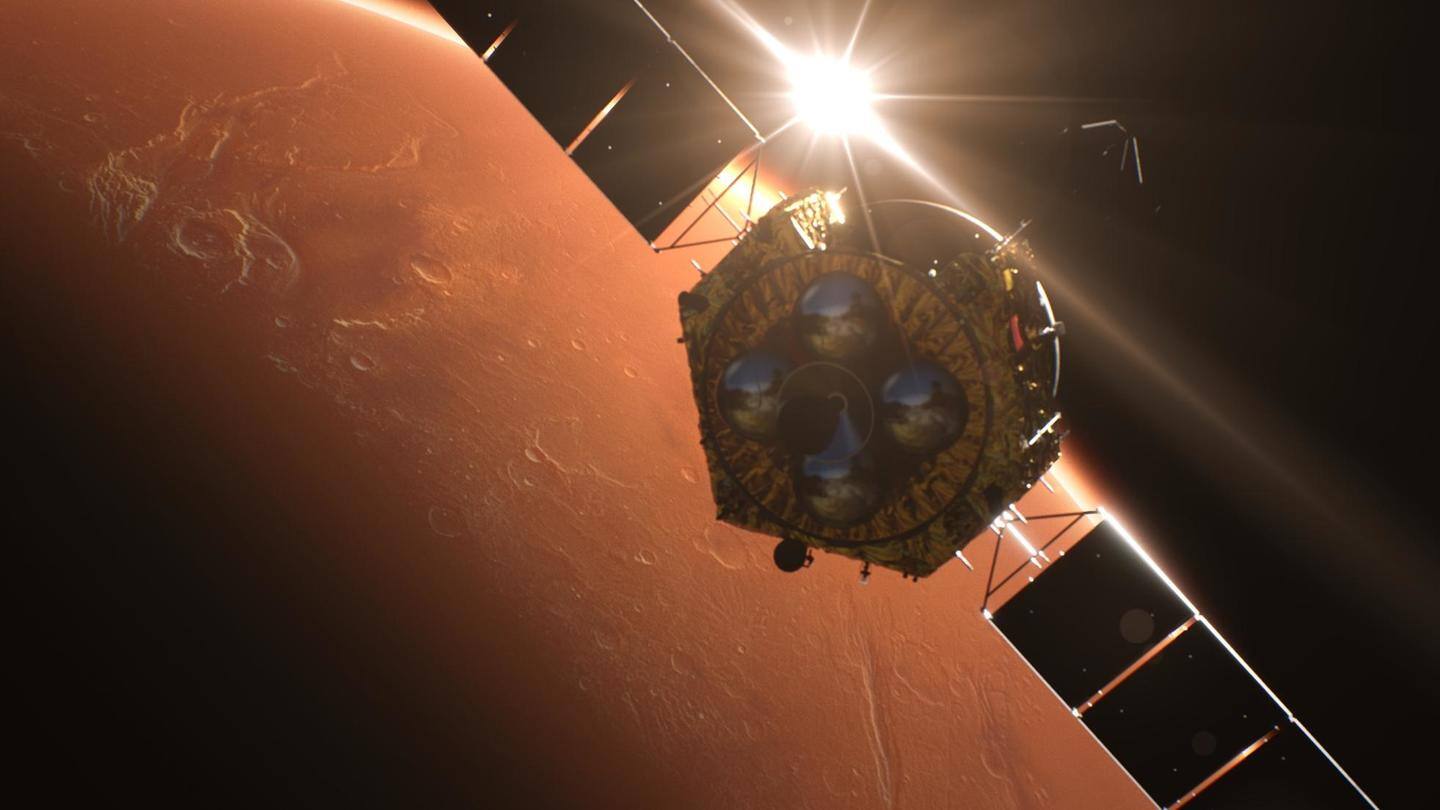
China's Tianwen-1 orbiter has photographed the entire surface of Mars
What's the story
China's first mission to Mars, the Tianwen-1, has completed mapping the Red Planet. To recall, it entered the planet's orbit in February last year.
The country's space agency has also released a series of images of the Martian surface, which show its poles, craters, and canyons.
The Tianwen encircled the planet over 1,300 times in just over a year to capture these pictures.
Context
Why does this story matter?
Tianwen-1 is China's maiden interplanetary mission and it successfully entered the Martian orbit in its first attempt.
The space orbiter has released several high-resolution images of the planet's surface and has also fulfilled its key scientific goals.
The Zhurong rover accompanying it is moving around on Mars and will help China in developing a detailed topographic model of the heavenly body.
Details
A brief look at the Tianwen-1
Tianwen-1, meaning 'questioning the heavens' in Chinese, consists of an orbiter and a rover called Zhurong. It entered Martian orbit in February 2021 and Zhurong landed on the planet on May 14.
The Zhurong has a radar that can detect pockets of water beneath the surface. It has traveled 1,921.5 meters on the Red Planet and is currently hibernating.
Images
The orbiter has sent back photos of Martian south pole
Tianwen-1 circled the planet thrice every Martian day and used a medium-resolution camera to map its surface.
The images taken include China's first photos of the Martian south pole, the 4,000km long Valles Marineris canyon, and impact craters called Arabia Terra.
Pictures of the edge of the Maunder crater and a top-down view of the 18,000-meter high Ascraeus Mons are also available.
Information
Tianwen-1 has fulfilled its primary scientific objectives
Tianwen-1 has fulfilled its primary objectives and will be used for an aerobraking test later this year. This will be in preparation for the Tianwen-3 Mars sample return mission which is tipped to launch in 2028. Tianwen-2 will not be a Martian mission.